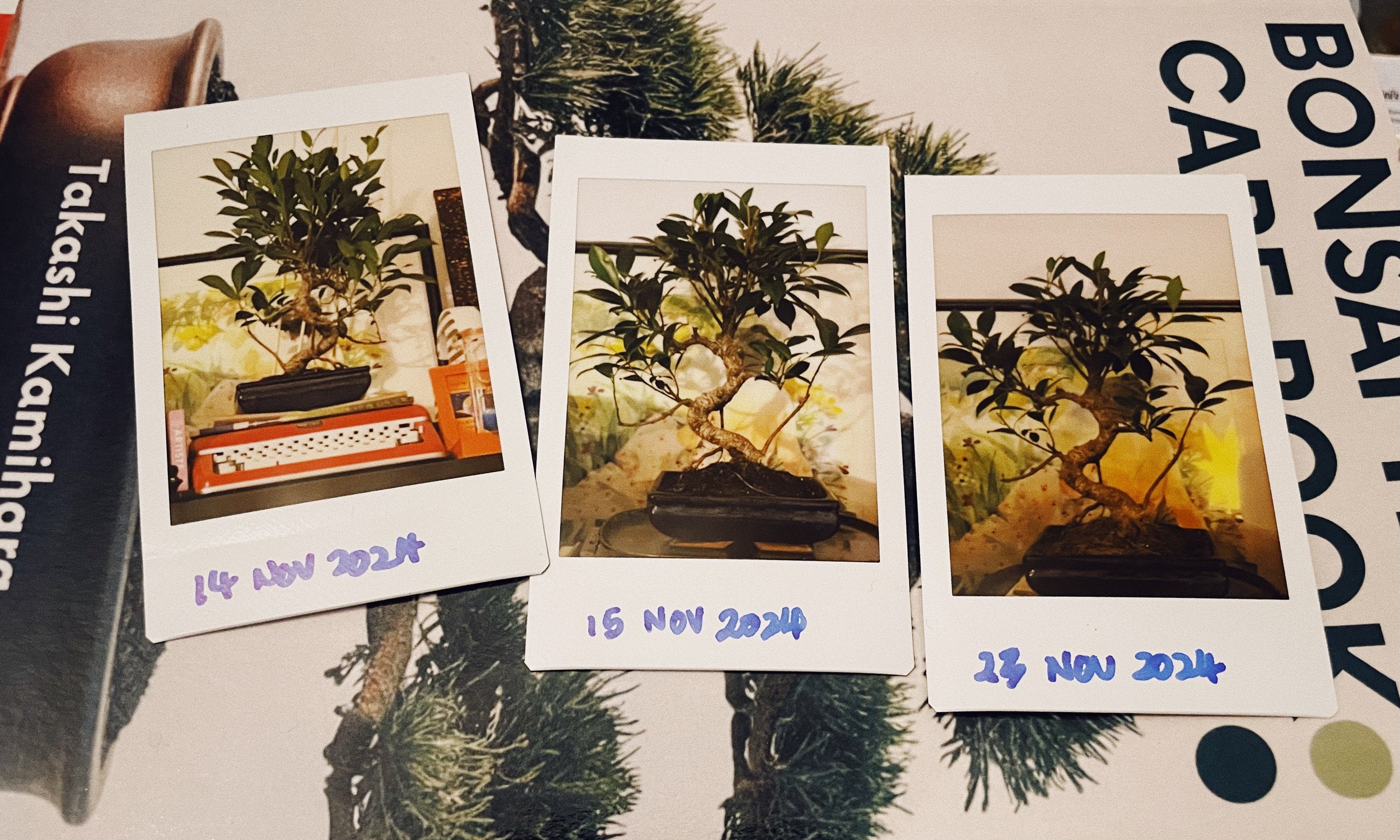My Bonsai Journey and Takashi Kamihara’s Book
My bonsai tree from the Netherlands arrived on November 14. It’s a fig (ficus) bonsai that I have yet to name.
You may wonder why I’ve developed a sudden interest in bonsai. Well, I’ve always been fascinated by these miniature trees but felt the timing wasn’t right to get into it. Now, however, the timing feels perfect.
There are surprisingly many books about bonsai that are available in the market. I bought an independently-published book by Takashi Kamihara titled BONSAI TREE CARE BOOK. The book arrived a week after my tree.
From left to right: My ficus bonsai—as-is—when it arrived on Thursday, 14 November 2024, looking rather bushy and unruly. I’ve pruned it—just a little bit—the next day (I was still unsure of what I was to do…). On Saturday, 23 November, I further pruned some shoots, leaves, and small branches. It’s looking rather bare now but I understood that it is a necessity to do so. One must be brave to cut most of the bonsai bits away so that the tree can grow to its potential!
Let’s talk about Kamihara-san’s book. Reading it has been an eye-opening experience for me. Like many, I always thought bonsai was only for experts or those with endless patience and free time, but this book completely shifted my perspective.
If you’ve ever dreamed of nurturing your own miniature forest or caring for an ancient tree in tiny form, this book is for you. While the writing could benefit from a good editor, it’s easy to read and packed with insights—so don’t let your inner Grammar Police hold you back.
What is Bonsai, Really?
After doing some research and also diving into the book, I now know that bonsai is more than just “tiny trees in pots.” It’s an art form with roots in ancient China and Japan, capturing the spirit of a majestic tree in a form small enough to live in a pot and to hold in our hands. But it’s also so much more—it’s a practice in mindfulness and a way to slow down and connect with nature in our everyday life.
Kamihara-san made it clear: bonsai isn’t about perfection or expertise. It’s about the process, and anyone can begin, no matter their skill level.
A Mindful Hobby
One thing I liked about the book is how it framed bonsai as more than just a hobby—it’s a way to de-stress and be present. I’ve already noticed that spending time caring for my tree helps shape and calm my mind.
The Basics Made Simple
The best part? This book was written with beginners like me in mind. It broke everything down step by step. From choosing the right tree (some species are better for first-timers) to watering, pruning, and shaping—it’s all laid out in a way that feels approachable and fun. I’ve already started experimenting with shaping my ficus bonsai. The techniques didn’t seem overwhelming…
A Few Surprises Along the Way
What made this book special is the mix of history and philosophy with practical tips. I loved learning about how bonsai originated in China before being perfected in Japan, and how it’s evolved into a modern art form.
My Takeaway
What I thought could be a complicated or expensive hobby turned out to be the opposite (actually, the associated cost does chalk up rather quickly, but still…). With patience and the guidance from Kamihara-san, I’ve already started the journey to create something beautiful and meaningful—and I didn’t need a hefty budget or years of experience to do it.
So, if you’re someone who’s always been curious about bonsai but felt intimidated, this book is a great starting point. It’s not just about growing trees—it’s about slowing down, connecting with nature, and creating something meaningful. You might just end up seeing not just your bonsai, but the world around you, in a whole new way.
I’ve just started my bonsai journey. Are you ready to start yours?
